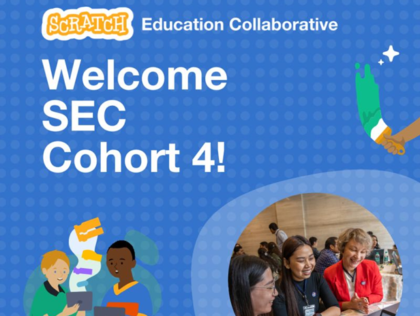Lately, one of the phrases you hear when the Vice President speaks is “digitization of the economy”. A digital economy presents opportunities in emerging technologies such robotics, artificial intelligence, blockchain, The Internet of things, quantum computing, big data, cloud computing, machine learning, mobile applications, nanotechnology and 3D printing among others. However, it is impossible to create a vibrant digital ecosystem without skilled human resource that can compete globally.
Ghana Education Service has out-doored a new Computing Curriculum for Basic 4 to 6. It is important that we scrutinize this curriculum in the light of this digitization agenda. The basic elements of every curriculum are content, skills and assessment. These elements will be analyzed for the new computing curriculum in the context of the 21st Century Skills which are the skills required by today’s human resource to compete globally. This, I believe, is timely as we would have done 20% of the 21st Century by next year. According to the World Economic Forum, the 21st Century skills consists of 16 skills divided into six foundational literacies, four competencies and six character qualities which are shown in the figure below.

Source: World Economic Forum
According to curriculum design expert Heidi Jacobs, “content is the selected subject matter either taught by the teacher or self-taught by the learner; it is knowledge we wish to impart and to
investigate within the time available.” Studying the new curriculum, the content is relevant to the times. It is focused on teaching basic ICT literacy, assisting students to communicate effective with ICT tools, acquiring skills in the use of the internet and developing basic ethics in using ICT tools. More importantly, basic programming and database management has been incorporated into the new curriculum. Programming is the foundation for most of the emerging technologies that are disrupting industries. The curriculum makes it clear that the focus is on deep learning through application of knowledge rather than surface learning targeted only at knowledge acquisition. The curriculum therefore places emphasis on the upper levels of Bloom’s Taxonomy which aims at application, analysis, evaluation and creation. These are all intended to provide young people with 21st Century Skills.

Studying the curriculum, even though 21st Century skills is not mentioned, it is obvious that is the focus. Specifically, the following 21st Century Skills are mentioned: ICT literacy, all the four competencies which are critical thinking/problem solving, creativity, communication and collaboration and two qualities such as leadership and cultural awareness. I believe if the syllabus is implemented properly it will deliver more than these skills. With the addition of programming to the upper primary curriculum, students will also acquire character qualities such as persistence, curiosity and adaptability. This has been discussed in an earlier article by the author titled “Coding: A Tool for developing 21st Century Skills in Children.” The challenge, however is how the curriculum will be implemented.
The question still remains. Will this curriculum deliver 21st Century Skills? Not necessarily! Over the last few months I have reviewed three ICT related curricula; Two belonging to universities. And my conclusion is the same for all of them. How students are assessed determine whether they will acquire the expected skills or not. To acquire these 21st Century skills, teachers must look at what happens in the real world and fashion the assessments accordingly. If we continue examining students on paper and asking them to define, list and describe the parts of a computer, they will only be thinking at the lower levels of Bloom’s Taxonomy. That is surface learning and it has little value in the 21st Century. Let us get them to think at the higher levels of Bloom’s Taxonomy by getting children to apply the knowledge to design and create websites, podcasts, presentations, blogs, games, etc. Children can be given a strong interdisciplinary foundation by using computing knowledge in other subjects. For example, the programming language called scratch can be used to write a game that uses the mathematical operations of addition, subtraction, multiplication and addition. Students can use information in other subjects to create presentations that incorporate text, video and audio.
For successful implementation, teachers must not only be trained on issues such as pedagogy but also, they must be trained to be able to use the applications mentioned in the curriculum. That way, they can also teach the content comfortably and confidently. IT professionals must be recruited to support teachers in schools. We also need to equip our schools with cheap computers like the Ncomputing which can have one system unit connected to three monitors. In the long-term, teacher training education must be transformed to reflect the objectives of this curriculum and the demands of the 21st Century workplace. While I admire the mindset behind the new upper primary curriculum, its success will depend on the human and ICT resources that are committed to its delivery. Unfortunately, our teachers lack the skill to teach parts of the curriculum and our schools lack the infrastructure required for successful delivery.
Author: Kuuku Sam – (Director of Professional Services, Institute of ICT Professionals, Ghana)
For comments, contact author kuuku.sam@iipgh.org or Mobile: +233274333510




